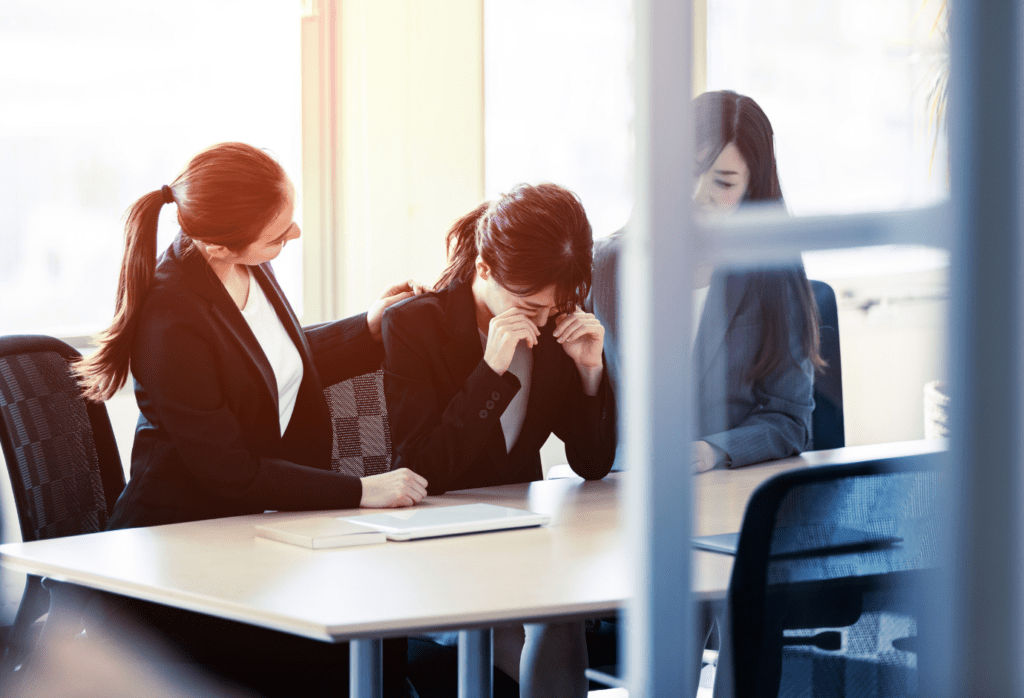Half of women in Australia have experienced some sort of sexual harassment in their lifetime.
That’s according to a survey conduced by the Australian Bureau of Statistics (ABS), which also found that the most common kind of harassment women received was inappropriate comments about their body or sex life.
The survey revealed that 53 percent of women (5 million) have experienced at least one incident of sexual harassment, while for men, it stood at 25 percent (2.2 million). When it came to unwanted touching, thirty percent of women said they have experienced it. Women and men who have experienced sexual harassment in their past were also more likely to have experienced sexual assault.
Will Milne, ABS director of the National Centre for Crime and Justice Statistics, told Sydney Morning Herald that the study revealed 30 percent of women and 14 percent of men who had experienced sexual harassment had also experienced sexual assault.
“This is compared with 2.7 percent of women and 1 percent of men who had not experienced sexual harassment but had experienced sexual assault,” he said.
Younger people were also more likely to experience sexual harassment, compared to other age groups.
The Australian Council of Trade Unions (ACTU)’s president, Michele O’Neil believes the data from the ABS reveal the reality faced by millions of women in their workplaces.
“The federal government has immense power to address these issues and this Government has been presented with multiple reports and dozens of recommendations,” she told Human Resources. “Australian women deserve a government which is willing to act to improve their lives.”
The ABS report, titled “Sexual Harassment: Statistics about sexual harassment, including prevalence, characteristics of victims, and intersections with other types of violence and abuse” took data from a 2016 personal safety survey and found that the frequency of sexual harassment for both women and has increased between 2012 and 2016.
Changes in the ubiquity of sexual harassment, in addition to the current climate around #MeToo and the shifting attitudes around these issues could be the reason behind these rising figures. People may now feel more confident in their ability to recognise the behaviour when they see it, or experience it, and are also more willing to label it as such in surveys and interviews.
The survey defined sexual harassment as being subjected to behaviour which one believed to be improper or unwanted, and which made them feel uncomfortable or was offensive due to its sexual nature.
These behaviours included indecent exposure; inappropriate comments; unwanted touching; indecent phone calls, texts, emails or social media posts; exposure to sexual content one did not wish to see, emailing the person or making them watch pornography, and distributing sexual photos or videos of the person without consent.
The survey found that individuals who find it hard to meet basic living expenses were more than twice as likely to experience sexual harassment.
Financial problems and lower life satisfaction were also linked to higher rates of sexual harassment.
Tanja Kovac, Chief Executive at Gender Equity Victoria claims the report was not surprising.
“I’m also one of those statistics, I experienced it when I was a young lawyer,” she told Sydney Morning Herald.
“[Kate Jenkins’ Respect@Work] report made it pretty clear what governments and what workplaces need to do. If there is no obligation or duty on workplaces to ensure that their staff modify their behaviour and take gender violence as an occupational health and safety issue, we’re not going to see the change that we need,” Kovac said.
“It’s just not on for there to be some workers in the workplace who think it is appropriate – to use my own example – to drop their dacks in front of a young woman lawyer.”
Kovac wants to see the full implementation of the Respect@Work report, which she considers the “blueprint on how to address sexual harassment in the workplace.”
RMIT Professor of Work, Gender & Regulation in the School of Management, Dr Sara Charlesworth, said the ABS findings were consistent with previous Human Rights Commission surveys on sexual harassment.
“We’re starting to build up a picture of a hostile culture, particularly towards young women, and particularly young women who are seen as being uppity or sure of themselves,” she told Sydney Morning Herald.
“You can bring them down by asking them a question in front of a group of people about their sex life or make a comment about what they are wearing. It’s truly depressing.”
The ABS analysis comes off the back of two reports into sexual harassment released by Australian Sex Discrimination Commissioner Kate Jenkins.
Last month, one of Jenkins’ report — “Report on the Independent Review into Commonwealth Parliamentary Workplaces” revealed that one in three political staffers had been sexually harassed.
The latest ABS report is the second in a series which aims to investigate the frequency and nature of sexual violence in Australia.
The first report, which was released in August – Sexual Violence – Victimisation found nearly three million Australians over 18 have experienced sexual violence, yet only 13 percent reported it to police.
You can read the latest ABS report in full, here.
If you or anyone you know is in need or crisis please call the National Sexual Assault, Domestic and Family Violence Counselling Service on 1800 RESPECT (1800 737 732), Lifeline 131 114, NSW Rape Crisis on 1800 424 017 (24/7) Sexual Assault Counselling Australia on 1800 211 028 (8am – 11pm, Mon – Fri) sexualassaultcounselling.org.au


